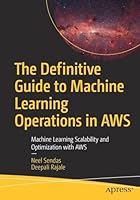
Semantic Web for the Working Ontologist, Second Edition: Effective Modeling in RDFS and OWL
- Length: 384 pages
- Edition: 2
- Language: English
- Publisher: Morgan Kaufmann
- Publication Date: 2011-06-03
- ISBN-10: 0123859654
- ISBN-13: 9780123859655
- Sales Rank: #459399 (See Top 100 Books)
Semantic Web models and technologies provide information in machine-readable languages that enable computers to access the Web more intelligently and perform tasks automatically without the direction of users. These technologies are relatively recent and advancing rapidly, creating a set of unique challenges for those developing applications.
Semantic Web for the Working Ontologist is the essential, comprehensive resource on semantic modeling, for practitioners in health care, artificial intelligence, finance, engineering, military intelligence, enterprise architecture, and more. Focused on developing useful and reusable models, this market-leading book explains how to build semantic content (ontologies) and how to build applications that access that content.
New in this edition:
- Coverage of the latest Semantic Web tools for organizing, querying, and processing information – see details in TOC below
- Detailed information on the latest ontologies used in key web applications including ecommerce, social networking, data mining, using government data, and more
- Updated with the latest developments and advances in Semantic Web technologies for organizing, querying, and processing information, including SPARQL, RDF and RDFS, OWL 2.0, and SKOS
- Detailed information on the ontologies used in today’s key web applications, including ecommerce, social networking, data mining, using government data, and more
- Even more illustrative examples and case studies that demonstrate what semantic technologies are and how they work together to solve real-world problems
Table of Contents
Chapter 1 What is the Semantic Web?
Chapter 2 Semantic modeling
Chapter 3 RDF—The basis of the Semantic Web
Chapter 4 Semantic Web application architecture
Chapter 5 Querying the Semantic Web—SPARQL
Chapter 6 RDF and inferencing
Chapter 7 RDF schema
Chapter 8 RDFS-Plus
Chapter 9 Using RDFS-Plus in the wild
Chapter 10 SKOS—managing vocabularies with RDFS-Plus
Chapter 11 Basic OWL
Chapter 12 Counting and sets in OWL
Chapter 13 Ontologies on the Web—putting it all together
Chapter 14 Good and bad modeling practices
Chapter 15 Expert modeling in OWL
Chapter 16 Conclusions







